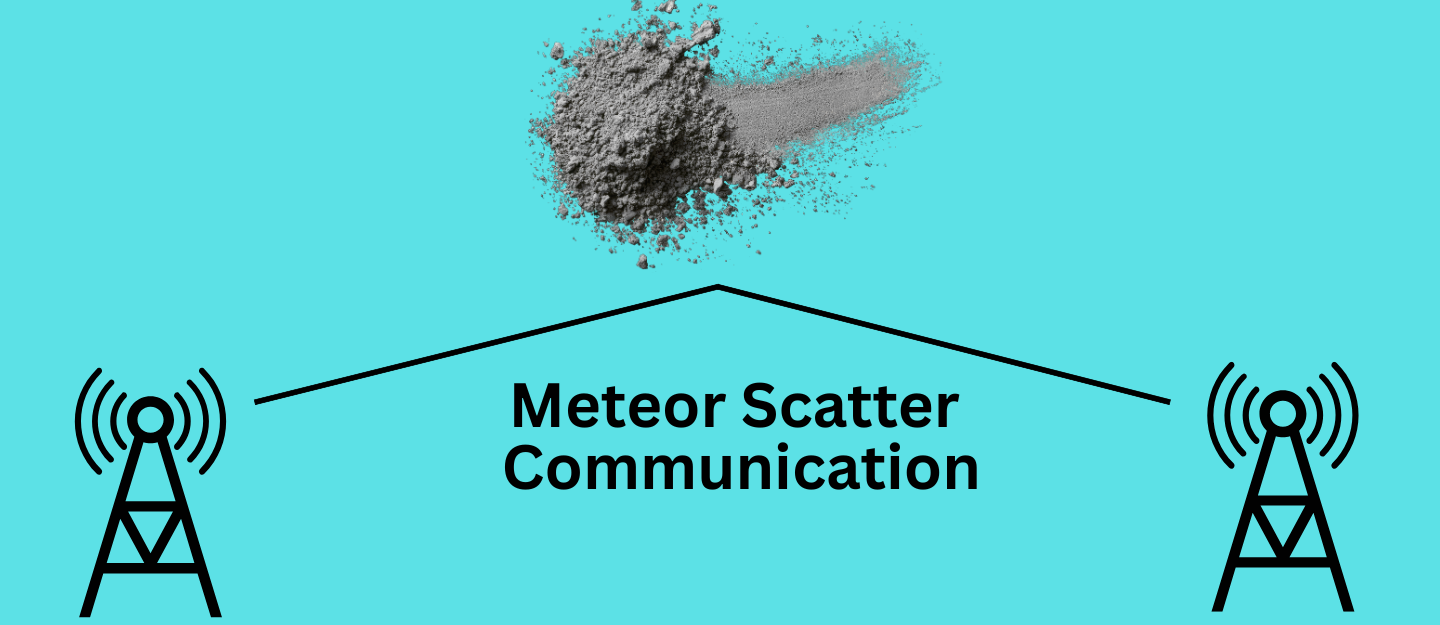Meteor scatter communication is an exciting and reliable method of achieving long-distance radio contacts, especially for amateur radio enthusiasts. It takes advantage of the brief but intense ionization trails left by meteors as they burn up in the Earth’s atmosphere.
These trails act as a temporary reflector for VHF radio signals, typically in the 30 to 150 MHz range. Although the reflection only lasts a few seconds, it’s enough time to transmit short bursts of data or voice. With proper setup and some practical tips, anyone can explore this fascinating aspect of radio propagation.
Understanding the Basics of Meteor Scatter
Before setting up your station, you need to understand what makes meteor scatter work. As meteors enter the Earth’s atmosphere, they leave behind trails of ionized gas at altitudes around 80 to 120 km.
These trails can reflect radio waves over distances of 500 to 2,300 km. Since these reflections are brief and unpredictable, operators must prepare for rapid and efficient communication.
Fortunately, meteor showers, like the Perseids and Geminids, increase the number of available trails. This gives operators more chances to make successful contacts during peak periods.
Equipment Needed for Meteor Scatter
To get started with meteor scatter, you’ll need specific equipment. A transceiver capable of operating in the VHF band, most often on 50 MHz (6 meters) or 144 MHz (2 meters) is essential. Choose a radio with fast transmit-receive switching and good sensitivity. Some radios come with built-in digital mode capabilities, which can be a major advantage.
Next, you need a high-gain antenna. Yagi antennas are the most commonly used due to their directional properties and ability to focus signal power. A rotor system can help point the antenna accurately toward the target area. Additionally, coaxial cables with low loss are important to preserve signal strength.
Don’t forget a stable and accurate computer clock. Digital modes like MSK144 or FSK441, commonly used in meteor scatter, require precise timing. For this reason, many operators synchronize their systems with internet time servers using Network Time Protocol (NTP).
Choosing the Right Digital Modes
Because meteor scatter involves very short openings, traditional voice communication is impractical. That’s why digital modes dominate. WSJT-X software by Joe Taylor is widely used and includes modes specifically designed for meteor scatter, such as MSK144 and FSK441.
MSK144 offers faster decoding and is better suited for shorter pings, especially during minor meteor activity. On the other hand, FSK441 remains popular for high-speed bursts and legacy setups. Importantly, these modes allow operators to exchange complete call signs, grid squares, and signal reports within a short window, sometimes just a few seconds.
As you experiment with both modes, you’ll discover which performs best under your local conditions and activity levels.
Setting Up Your Station
Start by installing WSJT-X and configuring your radio interface. Use a quality sound card interface for clean audio signal transmission and reception. After installation, verify that your audio levels are correct—clipping or distortion can ruin otherwise successful contacts.
Then, align your antenna in the general direction of your target. Since meteor scatter is line-of-sight with reflection in the middle, positioning becomes crucial. Use propagation maps and meteor shower forecasts to choose the best directions and times.
If you’re planning to operate during a major meteor shower, increase your station’s readiness in advance. This includes checking for software updates, testing your audio cables, and warming up the equipment.
Operating Tips for Better Results
To improve your success rate, follow these practical operating tips. First, keep transmissions short and to the point. Meteor pings rarely last more than a few seconds, so avoid unnecessary information.
Next, monitor activity using online networks and message boards. Many operators coordinate on chat platforms to announce when they are calling CQ or looking for contacts. Although coordination isn’t required, it significantly improves the chance of making a successful contact.
Additionally, timing matters. Although meteors can appear at any time, early morning hours—especially before sunrisentend to produce more consistent results. If you operate during major meteor showers, you’ll benefit from a sharp increase in ionized trails.
Furthermore, always be patient. You may need to transmit the same sequence for 30 minutes or longer before making a contact. It may seem frustrating, but when that ping finally completes a QSO, it’s worth the effort.
Logging and QSLing Your Contacts
Once you’ve completed a contact, be sure to log it properly. Include the time, frequency, mode, and signal reports. Many logging programs support digital modes and can interface directly with WSJT-X.
If you exchange QSL cards, consider electronic options like eQSL or Logbook of The World. These platforms make it easy to confirm meteor scatter contacts without waiting for physical mail.
Because these contacts are sometimes rare and challenging, they can be especially valuable for awards and grid chasing.
Final Thoughts
Meteor scatter communication combines technical skill, timing, and a touch of luck. While it may not be as simple as other propagation methods, the challenge is part of its appeal. Once you’ve heard your signal bounce off a meteor and make its way to another operator hundreds of kilometers away, you’ll understand the thrill.
With the right equipment, setup, and strategy, you can successfully explore this unique mode of radio propagation. So tune in during the next meteor shower, align your antenna, and let the sky work its magic.
Please consider Donating to help support this channel
